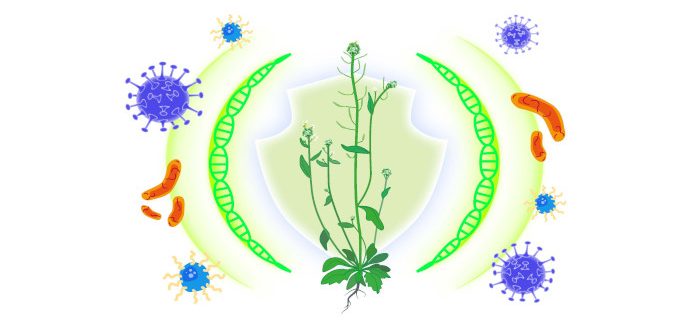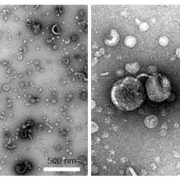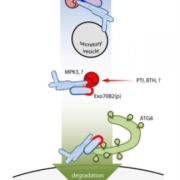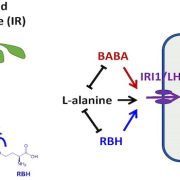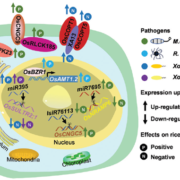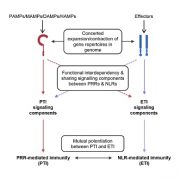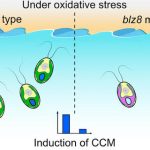A chromatin remodeler: its role as transcriptional repressor in plant immunity
Kang et al. (2022) show that Arabidopsis CHROMATIN REMODELING 19 represses transcription and functions in plant defenses against pathogens. https://doi.org/10.1093/plcell/koab318
by Huijia Kang and Yan Zhu, School of Life Sciences, Fudan University.
Background: Plants induce defenses in response to plant–pathogen interactions, which involve massive transcriptional reprogramming and chromatin remodeling. Increasing evidence implicates remodeler-mediated changes in chromatin as an important regulatory mechanism in plant defenses. Arabidopsis CHR19 is the plant homologue of yeast Fun30/Fft3 and animal SMARCAD1, which form a class of highly conserved single-component chromatin remodelers. Until now, the biological activity of CHR19 in chromatin remodeling and transcription regulation remained largely unknown.
Question: What is the biological activity of CHR19 in chromatin remodeling? How does CHR19 function in plant immunity to pathogens?
Findings: CHR19 is enriched in gene body regions, and its depletion causes massive changes in nucleosome position and occupancy in the genome. Several important genes in the salicylic acid (SA) and jasmonic acid (JA) pathways were transcriptionally up-regulated in the chr19 mutant under normal growth conditions. In addition, the chr19 mutation triggered higher susceptibility to the necrotrophic fungal pathogen Botrytis cinerea (which is affected by defenses in the JA pathway), but did not affect the growth of the hemibiotrophic bacterial pathogen Pseudomonas syringae pv. tomato DC3000 (which is affected by defenses in the SA pathway). Expression of CHR19 was tissue-specific and inhibited specifically by SA treatment. Such inhibition significantly decreased the local chromatin enrichment of CHR19 at the associated SA pathway genes, which resulted in their full activation upon SA treatment.
Next steps: Future elucidation of the delicate functional interplay of CHR19 with other epigenetic machineries is required. This includes not only the spatiotemporal overlap of these factors in the same plant tissue, but also the activity outputs from their crosstalk.
Reference:
Huijia Kang, Yuhao Liu, Tianyi Fan, Jing Ma, Di Wu, Thierry Heitz, Wen-Hui Shen and Yan Zhu (2022). Arabidopsis CHROMATIN REMODELING 19 acts as a transcriptional repressor and contributes to plant pathogen resistance. https://doi.org/10.1093/plcell/koab318


